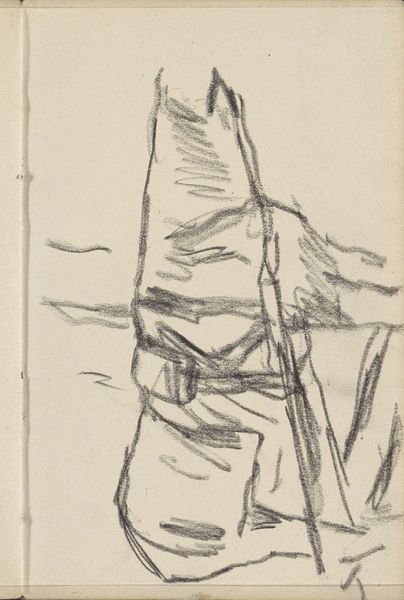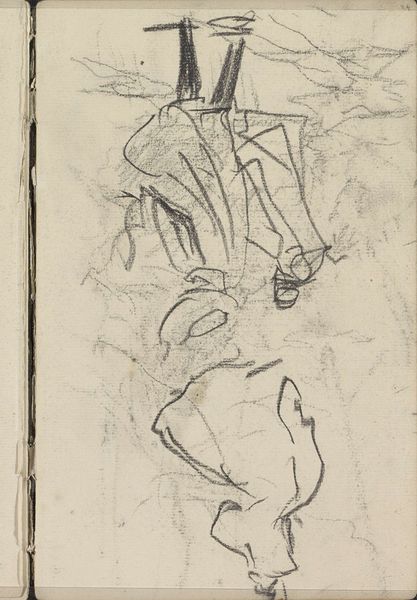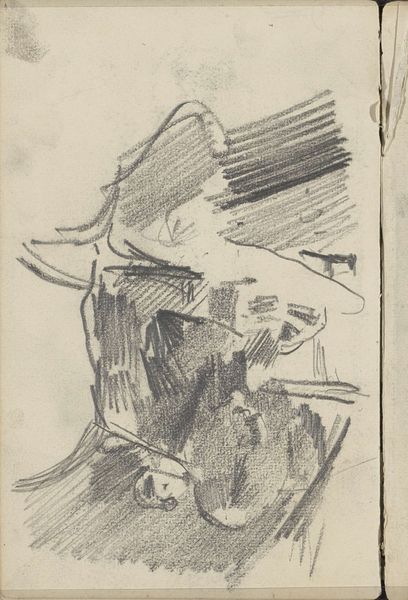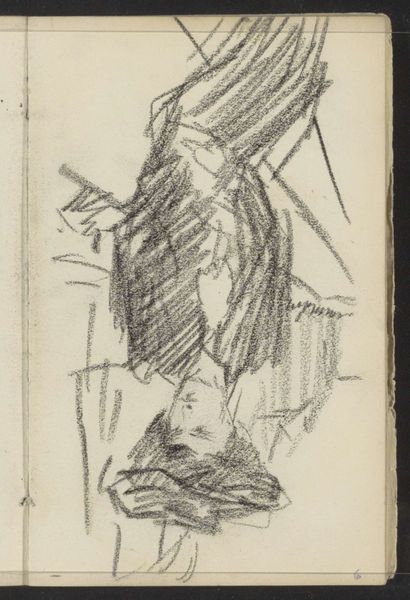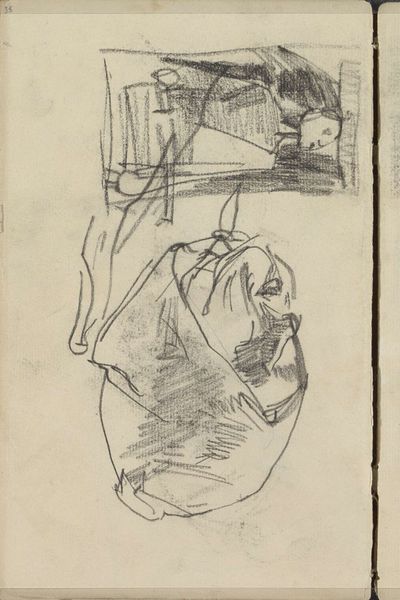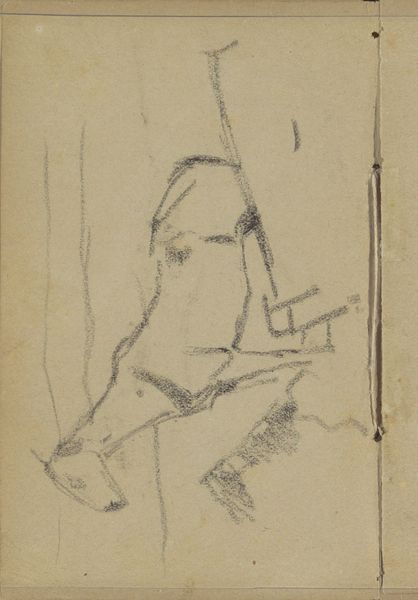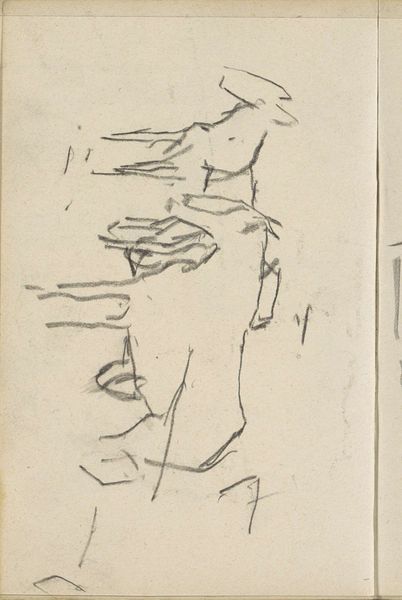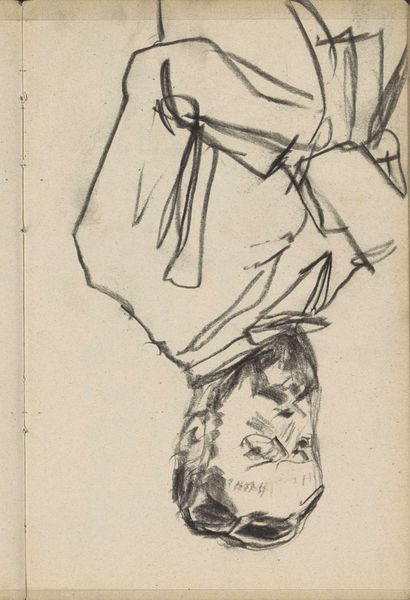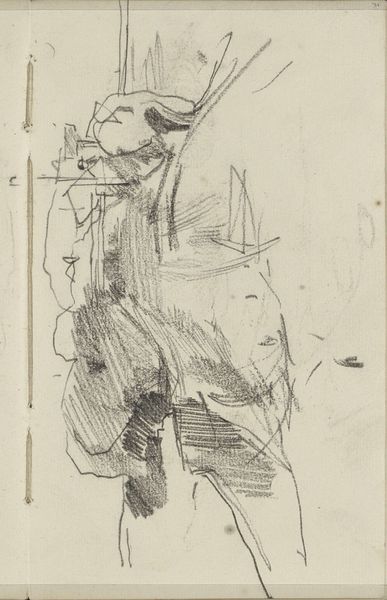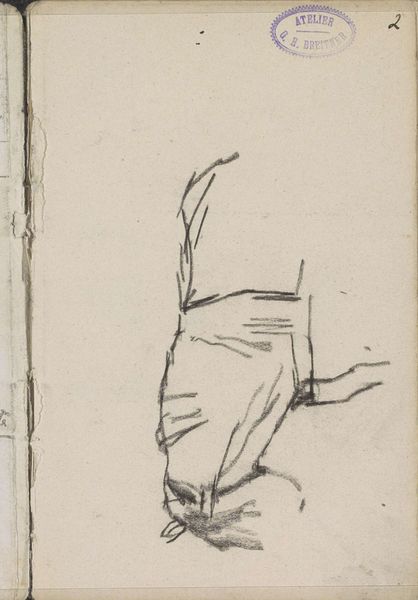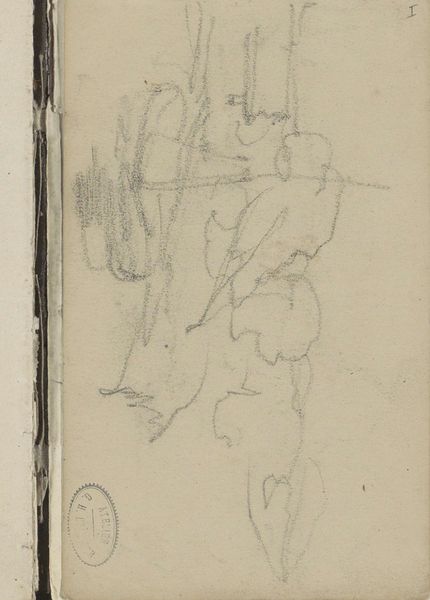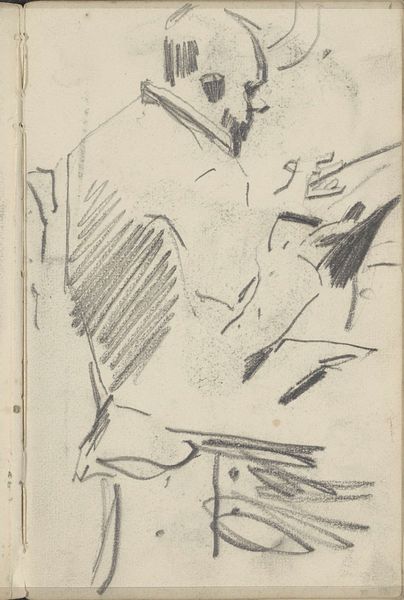
drawing, pencil, graphite
#
portrait
#
drawing
#
ink drawing
#
pen sketch
#
landscape
#
pencil
#
horse
#
graphite
#
realism
Copyright: Rijks Museum: Open Domain
Curator: Well, I find this compelling in its raw state. Let's consider George Hendrik Breitner's drawing, "Paard met tuig," which translates to "Horse with Harness," believed to have been created sometime between 1912 and 1919. Editor: My immediate response is to its simplicity. The sketch possesses an almost diagrammatic quality in the rendering of the horse's gear. Curator: Interesting take. Beyond its aesthetic properties, the artwork gestures towards broader narratives of labor, class, and the relationship between humans and animals during a time of rapid industrialization. The horse becomes emblematic of the working class, their strength exploited, and their existence rendered functional by a society indifferent to their individual needs. Editor: Yes, I do acknowledge that reading. But look at the lines; the artist is definitely intrigued by the interplay of light and shadow across the horse’s musculature. The subtle shading lends a sense of volume and form, bringing the subject to life despite the economy of detail. It shows an observational quality reminiscent of realist painters of his time. Curator: I would also argue that the incompleteness of the drawing leaves space for interpretation. Breitner seems to capture the animal’s essence with minimalist form. He reveals the exploitation while at the same time celebrating its spirit and power. The partial absence signifies the way society itself fails to perceive the comprehensive identities of marginalized communities. Editor: But wouldn’t you agree the texture of the graphite creates a captivating tension against the starkness of the negative space? It almost becomes the focal point through this very visual disparity! Curator: Undoubtedly, a study in light, as much as a subtle assertion on working-class consciousness. Perhaps the artist wished to focus less on traditional academic detailing and focus on modern techniques of image creation? Editor: It has been delightful. The visual language created is deceptively rich, considering it is only a sketch on paper. Curator: A point well noted. This piece becomes a launchpad to understanding historical dynamics and identity politics during a transformative epoch.
Comments
No comments
Be the first to comment and join the conversation on the ultimate creative platform.

